President Macron Welcomes PM Modi at the Bastille Day Parade with Warmth and Hugs
- Indian Tri-Services contingent Wows the French at their National Day Spectacle
Paris. Pomp and pageantry was in full flow as Indian Armed Forces tri-Services contingent led the military parade down the impressive Champs-Elysees avenue to celebrate the French National Day on July 14 with President Emmanuel Macron along with his special Guest of Honour, Prime Minister Narendra Modi witnessing the grand spectacle.
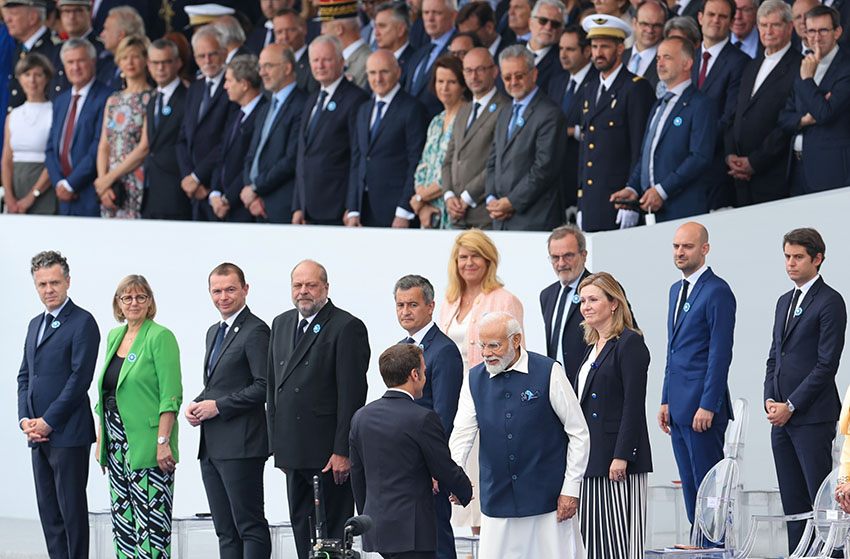
PM Modi, viewed as a leader who took the India-France Strategic Partnership to a higher plane, was awarded the Grand Cross of the Legion of Honor by President Macron at the Elysée Palace in Paris, on the eve of the celebration. Modi is the first Indian Prime Minister to receive this highest French honour in military or civilian order.
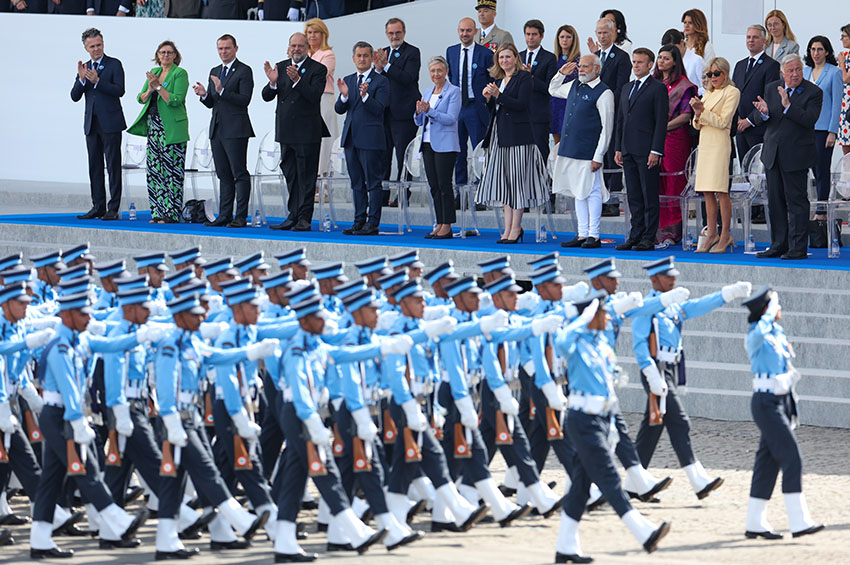
As per the French tradition at the parade, a foreign tri-Services contingent participating in it is accorded the honour to be the first among the marching contingents consisting of military schools from Africa, followed by French armed forces, border police and allied services. India and France are celebrating 25 years of Strategic Partnership signed in 1998, and ever since, their armies, navies and air forces have routinely been taking part in joint operational exercises as well.
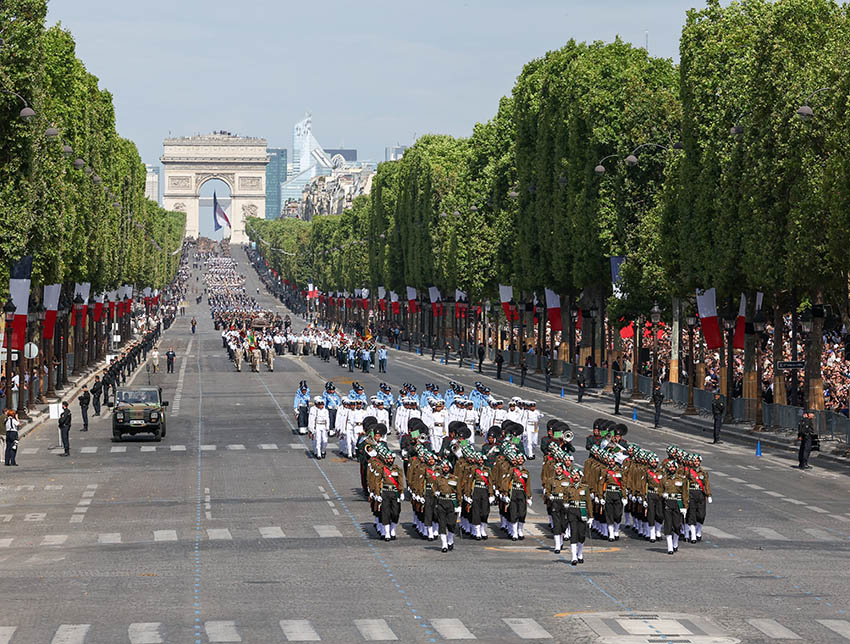
Ahead of the two-hour parade, in the backdrop of a clouded blue skies, the French Air Force planes hosted an extraordinary fly-past consisting of various platforms including the Rafale, which now forms part of the Indian Air Force inventory. Indian Air Force had three Rafales in IAF colours, and they added zing to the day as the jets roared over the avenue. The day showcases the French military might and is seen as a public demonstration of the depth of the country’s defence forces.
As soon as the marching contingents started the parade and reached the podium at Place de la Concorde, the dignitaries, consisting of President Macron, flanked by Mrs Macron and PM Modi, along with members of his Cabinet remained standing. PM Modi saluted as the Indian contingent glided past the podium. The French Chief of Defence Staff General Thierry Burkhard kept explaining the importance of each contingent to PM Modi who took keen interest in what was on display.
This was a bright and sunny day, crowds stood on either sides of the pavements as the marching contingents, followed by assorted armed personnel carriers, military trucks and tanks rolled down the nearly two-kilometre avenue from the iconic Arc de Triomphe to the Place de la Concorde, one of the largest public squares in the capital city.
A French television reported this year police placed greater crowd control measures and the viewing area for the public was closed much before the parade got underway. Only the early birds were lucky to find entry to the cordoned areas.
The French do not have the tradition of inviting foreign leaders to this annual event which is also known as the Bastille Day, to mark the anniversary of the storming of the Bastille in 1789 during the French Revolution. The last time India was invited was in 2009 when PM Manmohan Singh attended the parade and an Indian tri-services contingent was part of it.
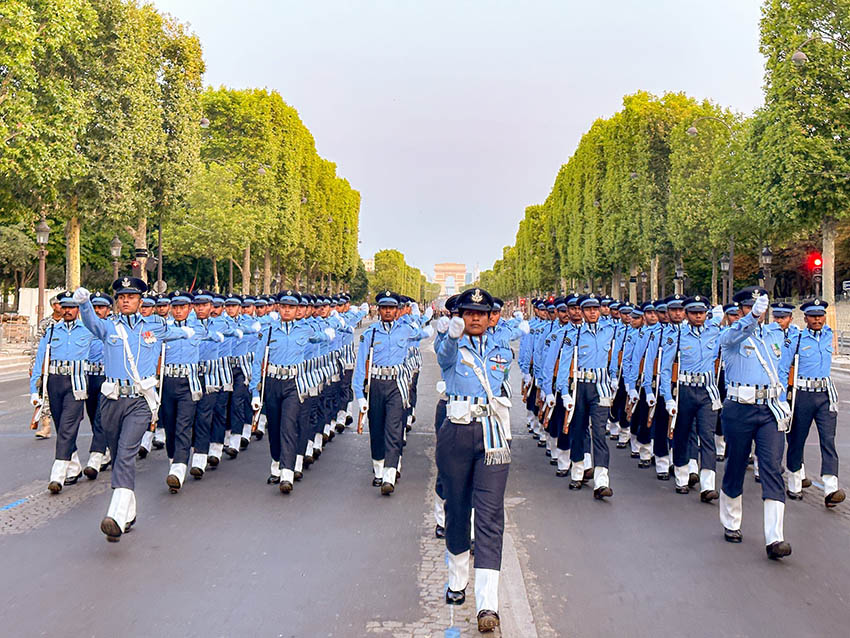
This year, the Indian Army contingent of 77 marching personnel and 38 members of the Band was led by Captain Aman Jagtap. Commander Vrat Baghel was heading the Navy contingent while Squadron Leader Sindhu Reddy led the Air Force contingent by Squadron Leader Sindhu Reddy.
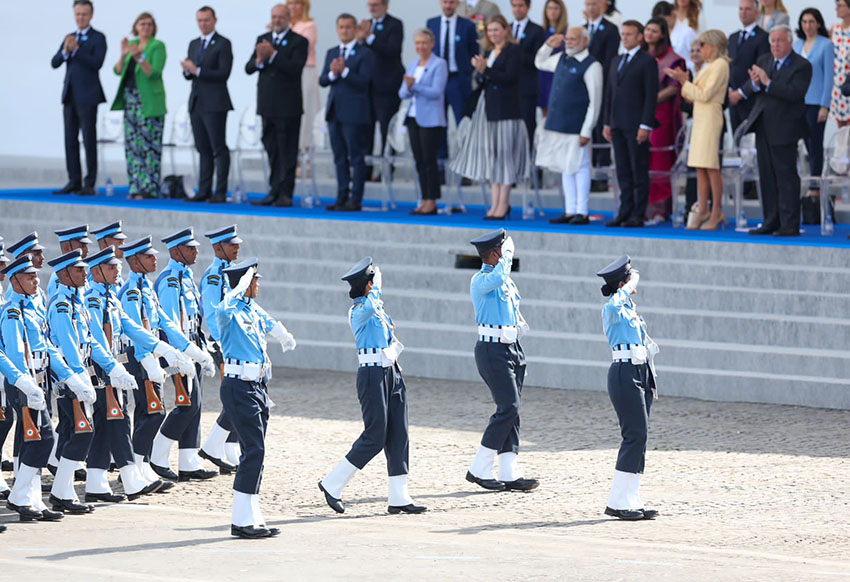
The Punjab Regiment, one of the oldest Regiments of the Indian Army, and whose soldiers took part in both the World Wars on the French side marched with pride accompanied by the Rajputana Regimental Band. The marching tune and the arm-swing of the marching contingents just ‘wowed’ the people.
The French media too was swayed by the spectacle of clock-work precision displayed by Indian tri-services contingent and the amount of practice the participants put in. As per its practice, the French armed forces did not swing their arms back and hence, the Indian tri-services arm swing began a talking point as did its ‘Josh”. “How’s Josh” commented a French television anchor as the Indian contingent came up.
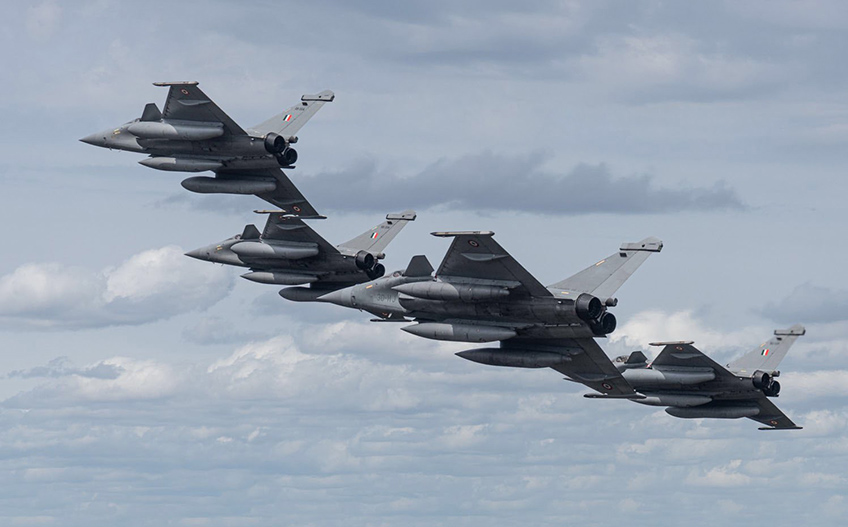
There is a historical link between the Indian and French Armies which can be traced to World War I when over 1.3 million Indian soldiers saw action in the war. The courage, valour and bravery of the soldiers of whom 74,000 never returned home was a crucial contribution in winning the war. Then in World War II, nearly 2.5 million Indian soldiers were in action in theatres of war across Asia, Africa and Europe.





